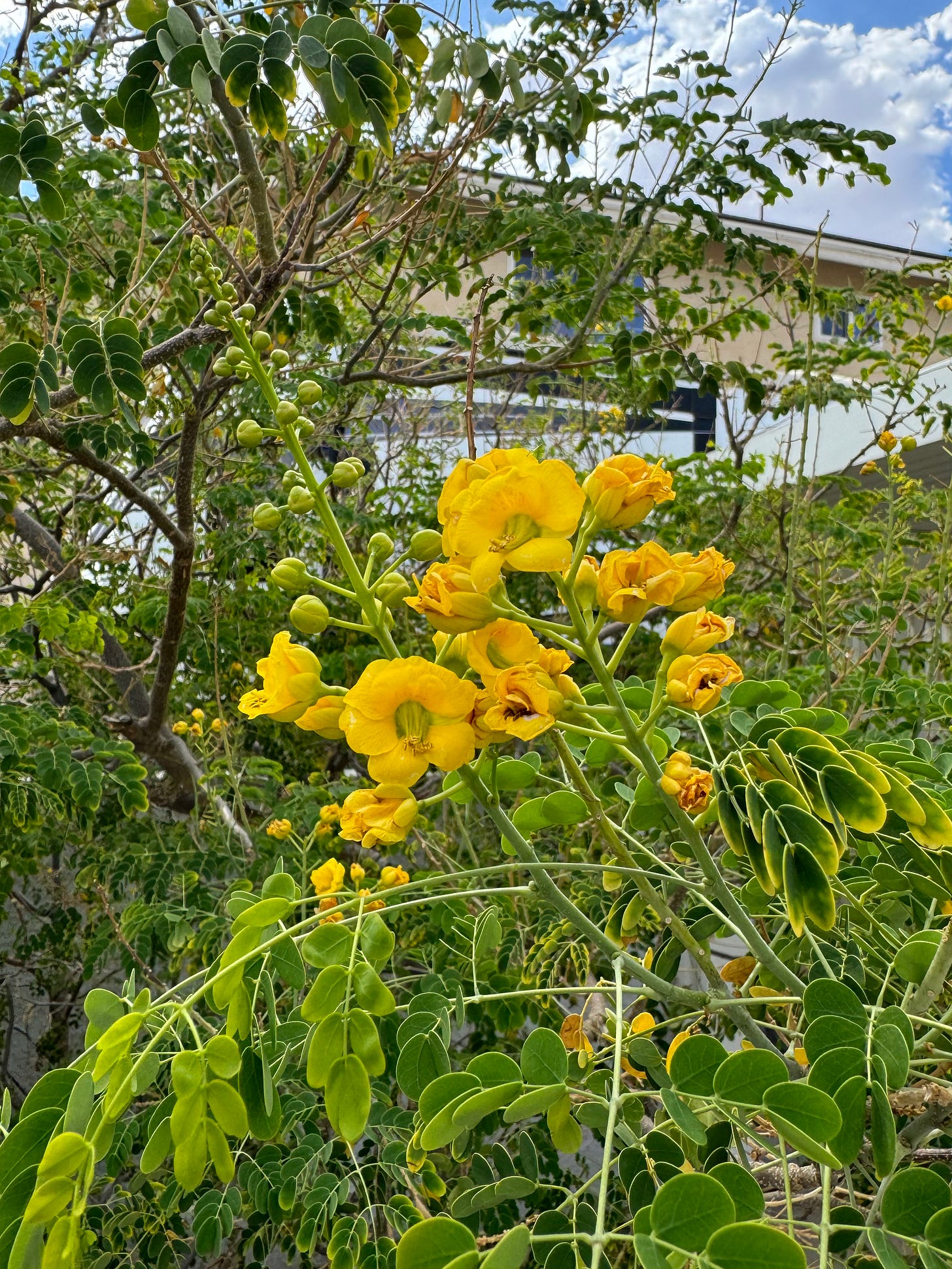A Fine Desert Tree for Your Garden
Mexican bird-of-paradise, with its recurring yellow flowers and small, branching canopy, is a fine small tree for your desert garden
I would not blame you if you confused the sounds of Caesalpinia mexicana pods firing open on an early summer afternoon with the sound of God snapping His fingers.
Also known botanically as Erythrostemon mexicana, and commonly as Mexican bird-of-paradise, this shrub, or small tree, grows far too close to the pool in my southern Nevada garden. But the clear yellow flowers, which bloom in the early summer and then again after rain or a long, slow drink from the hose, make me forgive the previous gardeners for their poor placement of this plant. In fact, a row of them edge the entire backside of the pool, their tiny, leguminous leaves perfectly synchronized to fall with the comings and goings of drought and heat.
The sound of those pods cracking open always surprises me. I look around, wondering where it came from. It is the sound of inspiration, a light bulb going off in my head: there and gone in an instant. I know I am at risk of imbuing the sound with some deep sense of purpose that does not exist outside of the ordinary routine of this at-home-in-the-desert tree. It has, after all, been flinging seeds long before any human could ever remark at the sound. That crack is propagation, not inspiration, sending its seeds to remarkable lengths.
The routine is all but ordinary for wild-ish gardeners like me and precisely why I’m not bothered by this plant’s excesses. There are four seedlings, volunteers, I’m cultivating some forty feet away from the pool—which is how far these seeds seem to fly. Those far flung seeds also tell you something about the tenacity of this plant. In the Mojave, just about anything that self sows is worth keeping around.
If you choose to grow this small tree in your garden, consider siting it far from the pool and underplanting it, once it achieves height, with golden barrels (Echinocactus grusonii). If you are a fan of penstemons and have any success with them (I am; I do not), then allow bright pink Penstemon parryi (Parry’s penstemon) to seed the understory. I don’t know if Caesalpinia mexicana’s canopy is thin enough to support one of my favorite spring ephemerals, desert bluebells (Phacelia campanularia), but it is certainly worth trying.
This shrub handles the occasional cold night; suffering damage at temperatures of 25 degrees (F) and colder. It needs full sun and deep watering a few days before you are expecting guests so as to have pretty yellow flowers to greet their arrival.
Back to that sound—it occurs to me that it is less like a god snapping his fingers, and more like one impatiently cracking her knuckles.




